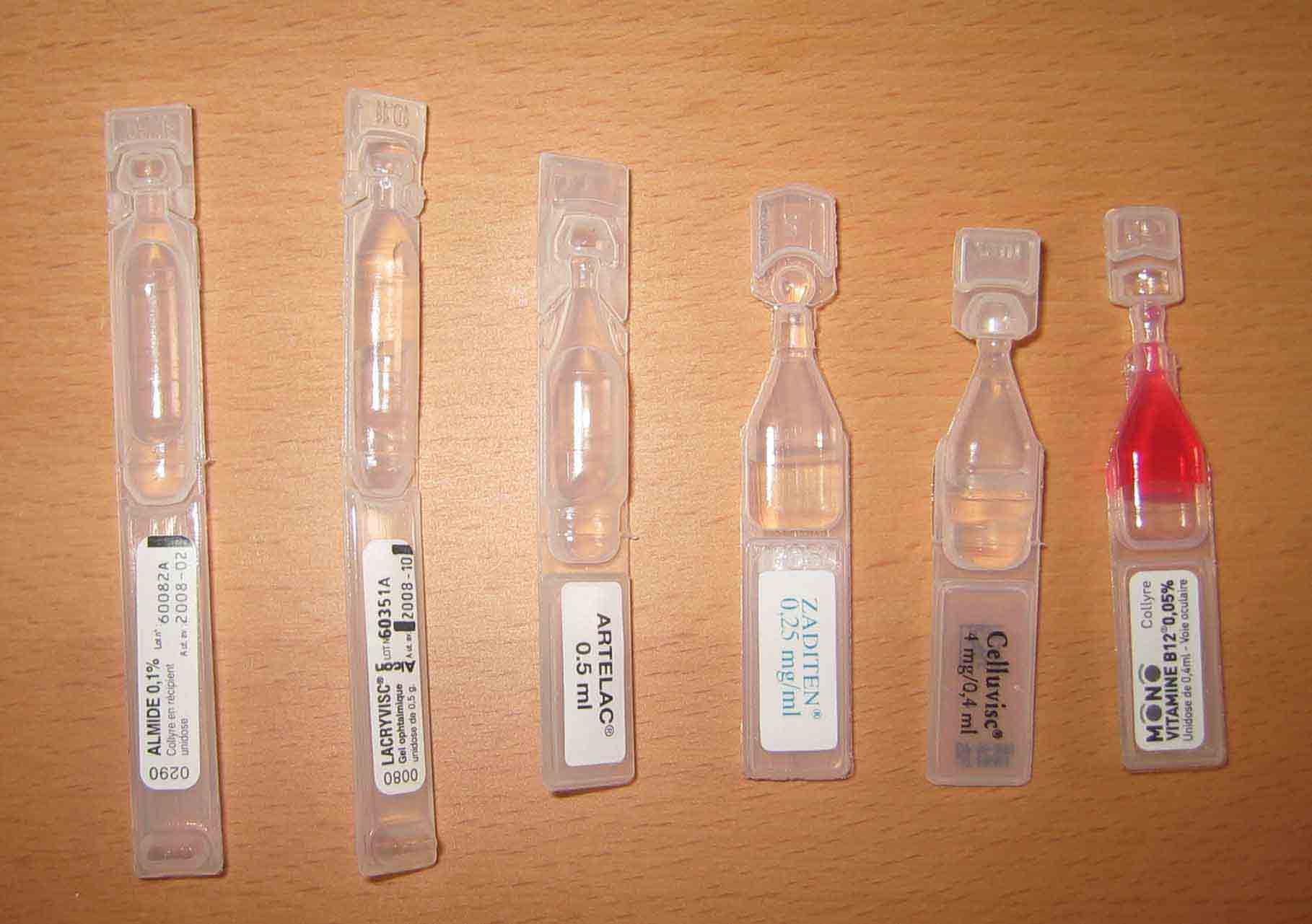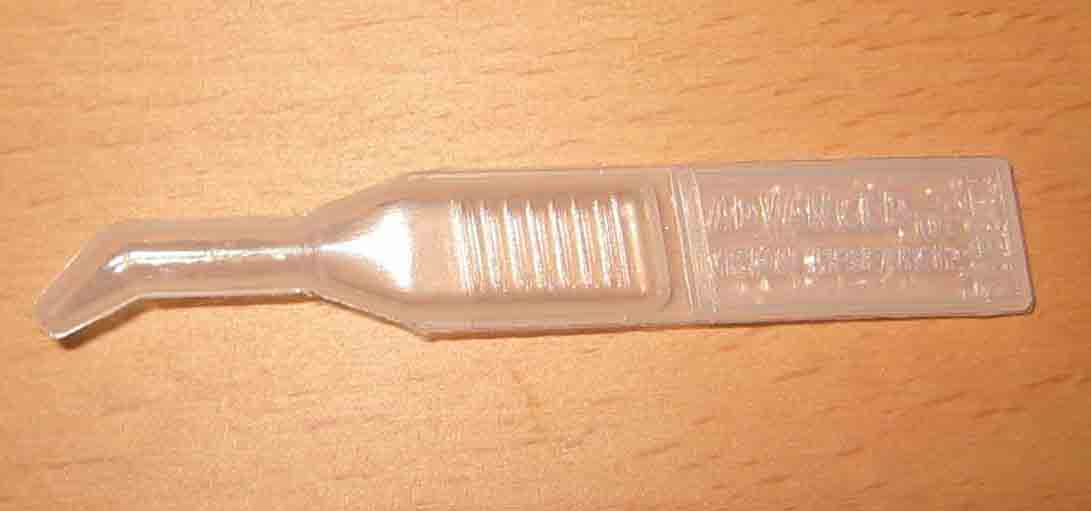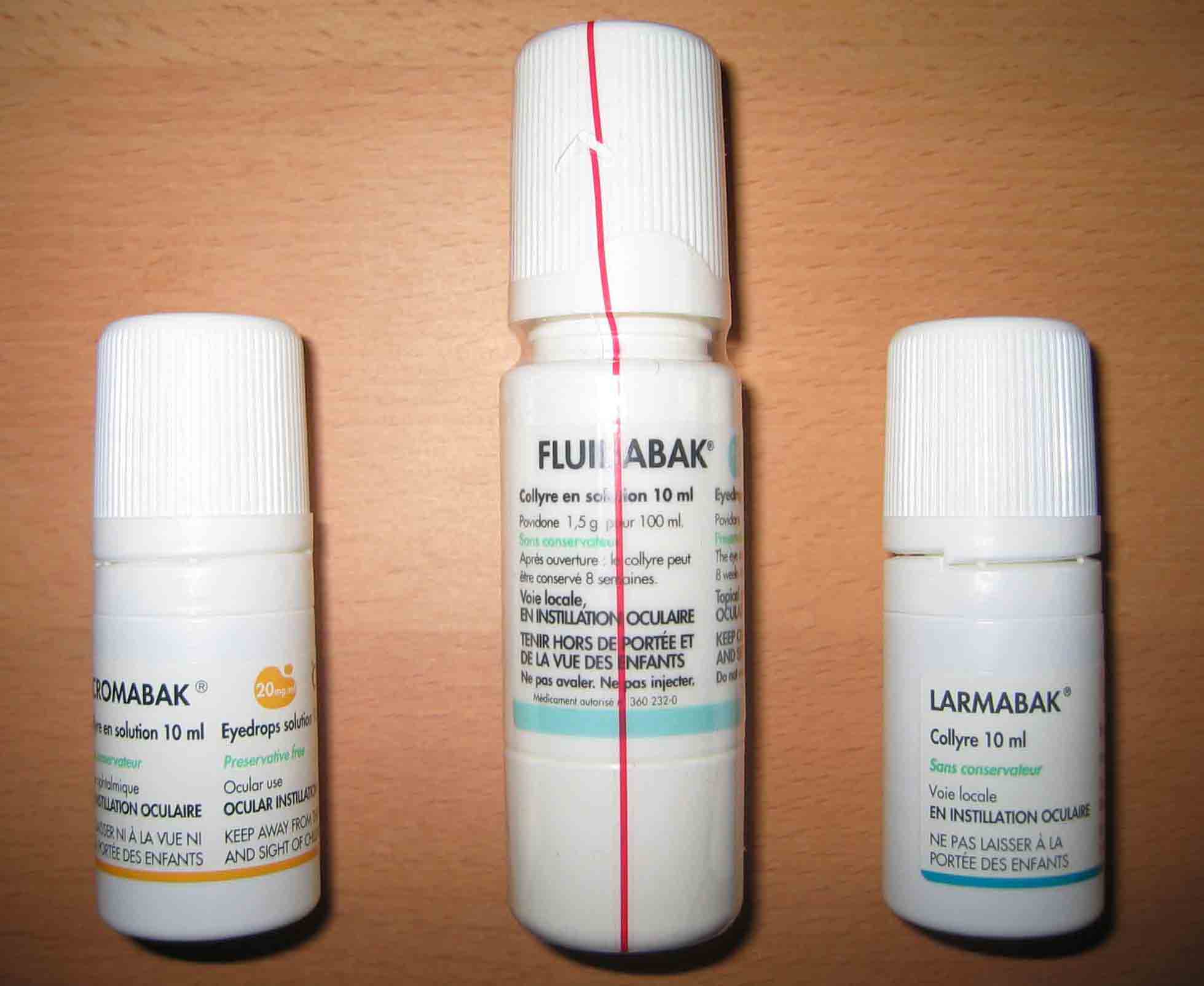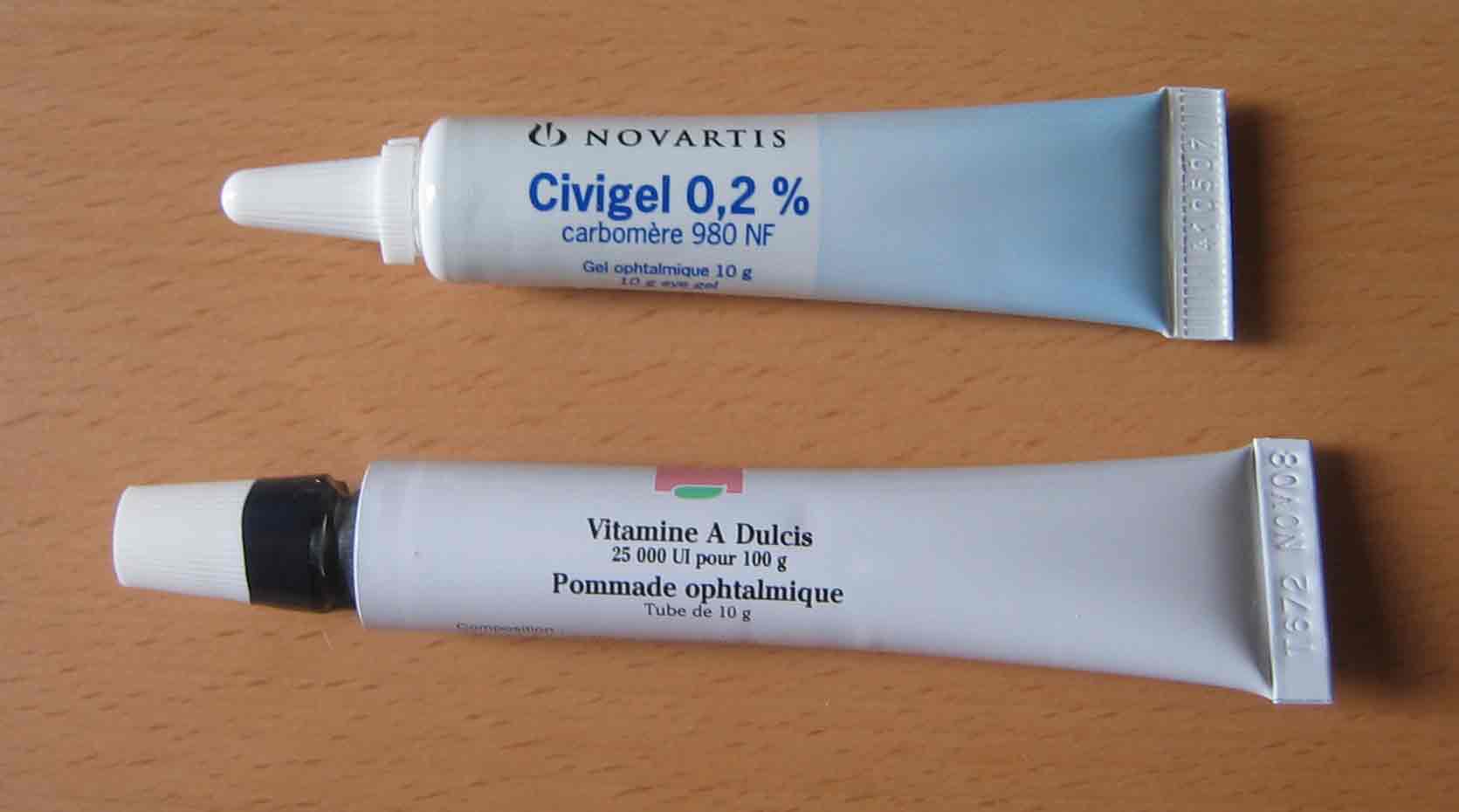Alternatives to
Preserved Eye Drops
Single use vials or
unit-dose
eye drops

Single use vials are increasingly
being used to treat many ocular diseases, despite being insufficient to
ensure appropriate for all those who need to avoid preservatives (particularly
chronic ocular diseases that require frequent doses). Currently, there
are mainly single-use vials for dry eyes, but recently non-preserved
treatments for glaucoma and allergies made their appearance. .
On the left, single use vials used to
treat dysfunctional tearfilm syndromes, antihistaminics and wound
healing substances. These are usually sold by
packs of 20 to 30 drops (usually slightly more expensive than preserved
bottles).

Some may criticise by saying that
they are hard to manipulate, but in our humble opinion it's quite the
contrary and they are much more convenient to carry on than preserved
bottles. On the right, an incurved single use vial by Thera Tears to
facilitate instillation in the eye.
Since they have a limited life and
are meant to be thrown away after one usage, single use vials are
unlikely to be contaminated. Thus, single use vials when used appropriately are safer than bottled
preserved eye
drops used for several weeks (especially in an unhygienic manner and
inappropriate manner) .
Unpreserved bottles
using special containers

In the last few years, some unpreserved bottles made
their appearance due to new container and tip mechanisms with filtering
membranes (up to 0.2
µ) capable of retaining
most bacteria. They are usually less expensive than singe use vials and
have a greater capacity that may be more convenient for frequent dosing.
These bottles exist for dry
eyes mainly, but unpreserved bottles for eye allergies and corneal
healing have made their appearance. There are several system including
the ABAK® used in several European countries.
Gels and Ointments
without preservatives
 Gels
and ointments may or may not contain preservatives
despite an identical exterior aspect (therefore reading the insert is
compulsory!). On the left, on the top (a gel) that contains a
preservatives and bellow (an ointment) that does not contain
preservatives.
Gels
and ointments may or may not contain preservatives
despite an identical exterior aspect (therefore reading the insert is
compulsory!). On the left, on the top (a gel) that contains a
preservatives and bellow (an ointment) that does not contain
preservatives.

On the right, a Norwegian example of a non preserved
gel. The issue is particularly important for gels and ointments since
their residence time (in the eye) is very important!
Useful
advice:
Read the insert and
handling instructions carefully.
Wash your hands as much as
possible when instilling or manipulating your drops.
Avoid any contact of the
fingers, eye, lids or eyelashes (or any other contaminated surface) with
the tip.
Keep your eyedrops in dry,
fresh and clean locations -afar from water points that may contain
amoeba.
Keep out of sunlight and
heat.
Replace, screw the cap of
the bottle after use. .
Don't keep your single use
vial open for long time: open it, use it
immediately and throw it away.
Don't forget to ask your
ophthalmogist if there is a non-preserved alternative for your treatment.
If so, always prefer the unpreserved option.
If you carry single use
vials with you, please place them in a clean and dry recipient.
This is what we call the preservative
paradox!
Preserve
our Eyes, not our Drops!
▲

copyright ©
Keratos 2007